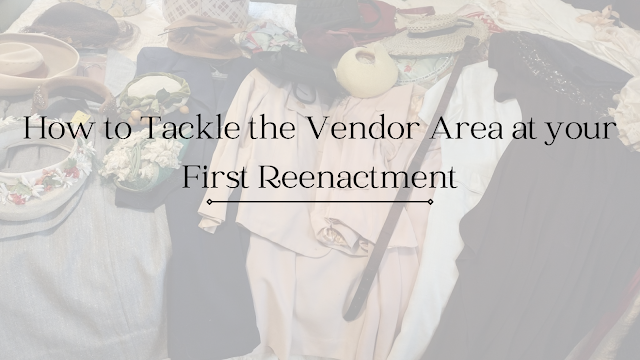When you're at an event and are excited to build up an impression, it can be really easy to go nuts in the vendor area. . . You will find lots of attractive goods at the vendor area, but buyer beware! And I mean it too! Too often I have seen well-meaning reenactors get ripped off by bad sellers or simply a lack of education and it all could have been avoided if they had just cooled their heels, done some homework or taken a more experienced reenactor with them.
In tackling the vendor area, do your homework! Understand what you are looking for and how to identify it out in the wild. This means cracking open a book (you know, that dry crusty thing in the corner made of paper. . . ), or going to a museum, or even getting online and studying digital museum collections or just looking at digitized primary source material (or maybe this blog which has lots of resources at your disposal .. . . hint, hint). Your homework should also include asking your fellow reenactors questions and lots of them. Ask them to see their research material and original items. Pick their brains and learn from them. Not sure who to ask for help? Then ask around, ask for fellow reenactors for who they would recommend turning to for help. Not every reenactor takes research seriously and asking around can give you the inside scoop on who knows what about this, that and more. The more research you can do before an event and hitting the vendor area, the better off you will be.
If you have done your research, and know what impression you are aiming for, build a shopping list. List everything you need or want. For a civilian impression, list shoes, dress, blouse, skirt, jacket, hat, gloves, etc. etc. etc. If you need help building a list of what to look for, then use mine which you can find here. A shopping list helps you narrow your focus much like a grocery shopping list.
Now that you have done some homework, built up a shopping list and are at the event having a great time, it's time to check out the vendors . . . . Right? NO!! Before you go to the vendors, grab a buddy! But not just any buddy. Grab a buddy who can help you identify period correct pieces out in the wild. Someone who knows the difference between a 1950s hat and a 1940s hat. Someone who knows the difference between a period correct dress, an "ok" dress and a big fat no dress. Bring along a buddy who is willing to educate you on what is and is not period. Never tackle the vendors area solo unless you are absolutely, confident you know what you are doing.
Some vendors are better than others. It's true, some vendors are really knowledgeable about vintage and they can guide you in training your eye to what is and is not period while others are not so knowledgeable. This is where going with a buddy can save you from buying something that is not period. Just because a vendor says it is period, does not mean that it is. Also, just because it is 1940s piece, does not mean that it is period for WWII . . . There are some post war fashion trends that will not work for a WWII event. Again, having a buddy to shop with you can help you identify what will work and what will not. To be extra specific here, we are focusing on building a German WWII civilian look and most vendors are not going to be that niche. A German WWII civilian look is not quite like an American look which most vendors are going to cater to.
Shopping with a buddy can help you make sure you are getting the right pieces, at the fair prices, the first time. A buddy also serves as a mirror, making sure that what you choose is not only period, but will fit you well and look attractive on you.


Comments
Post a Comment